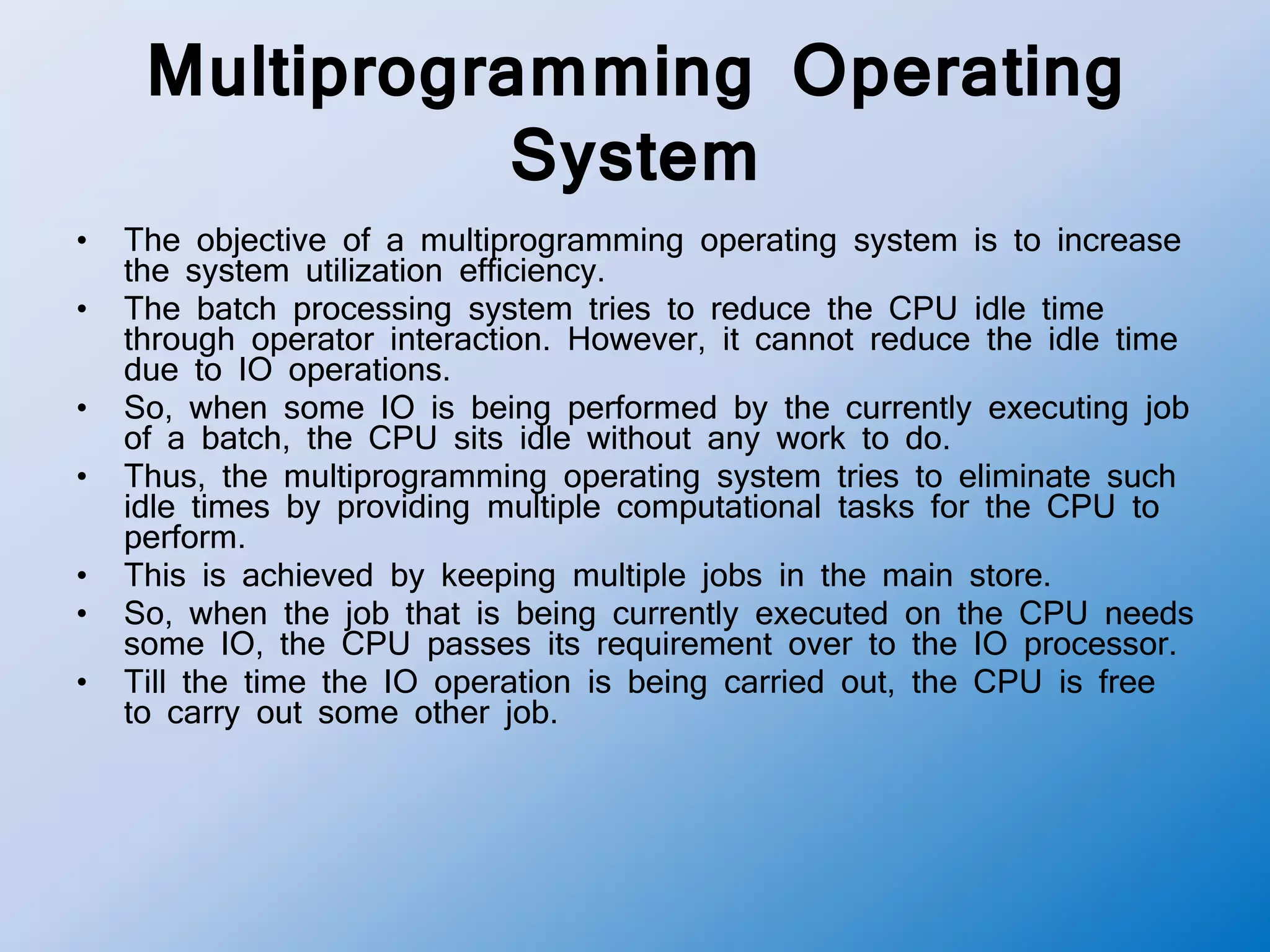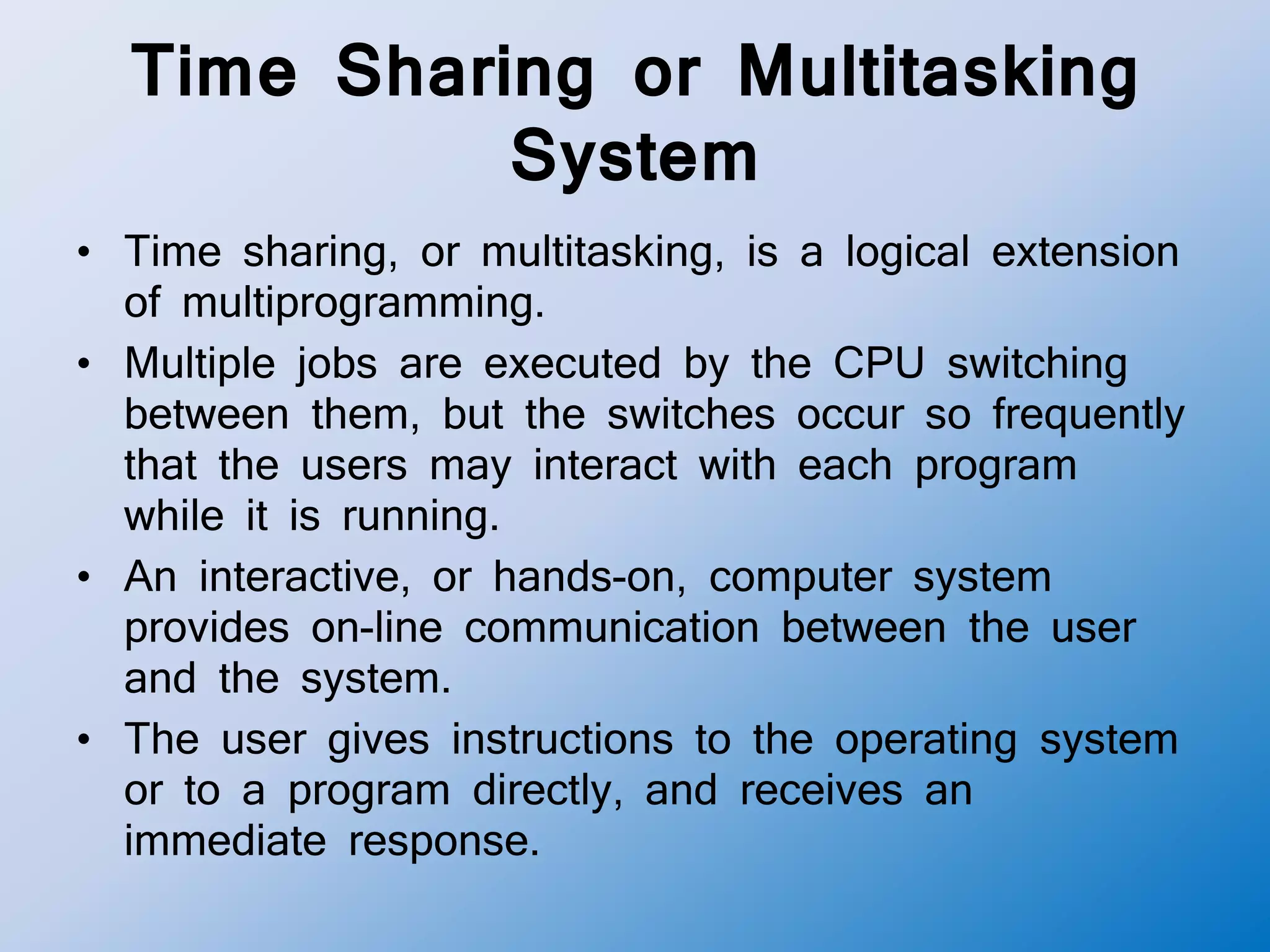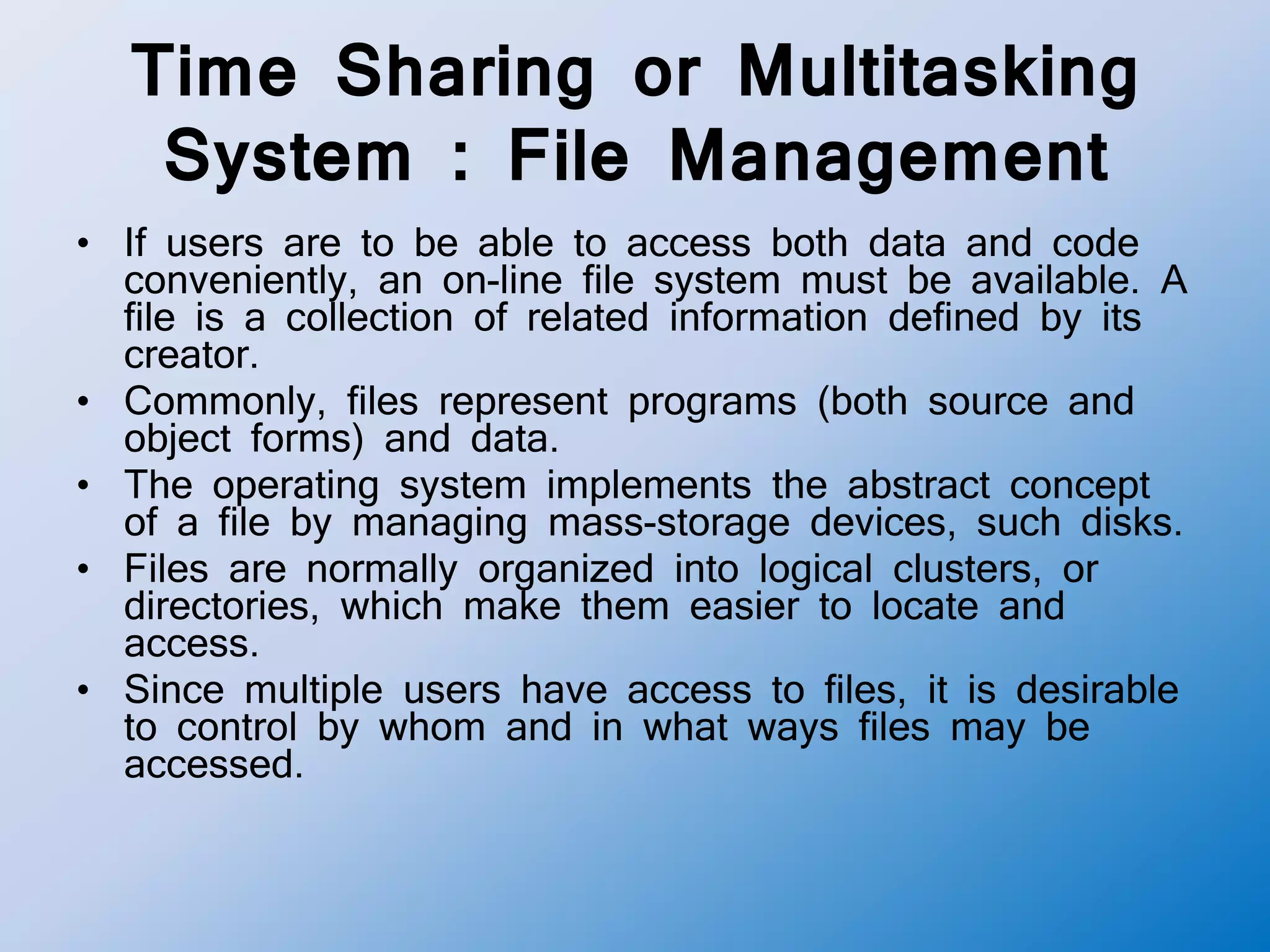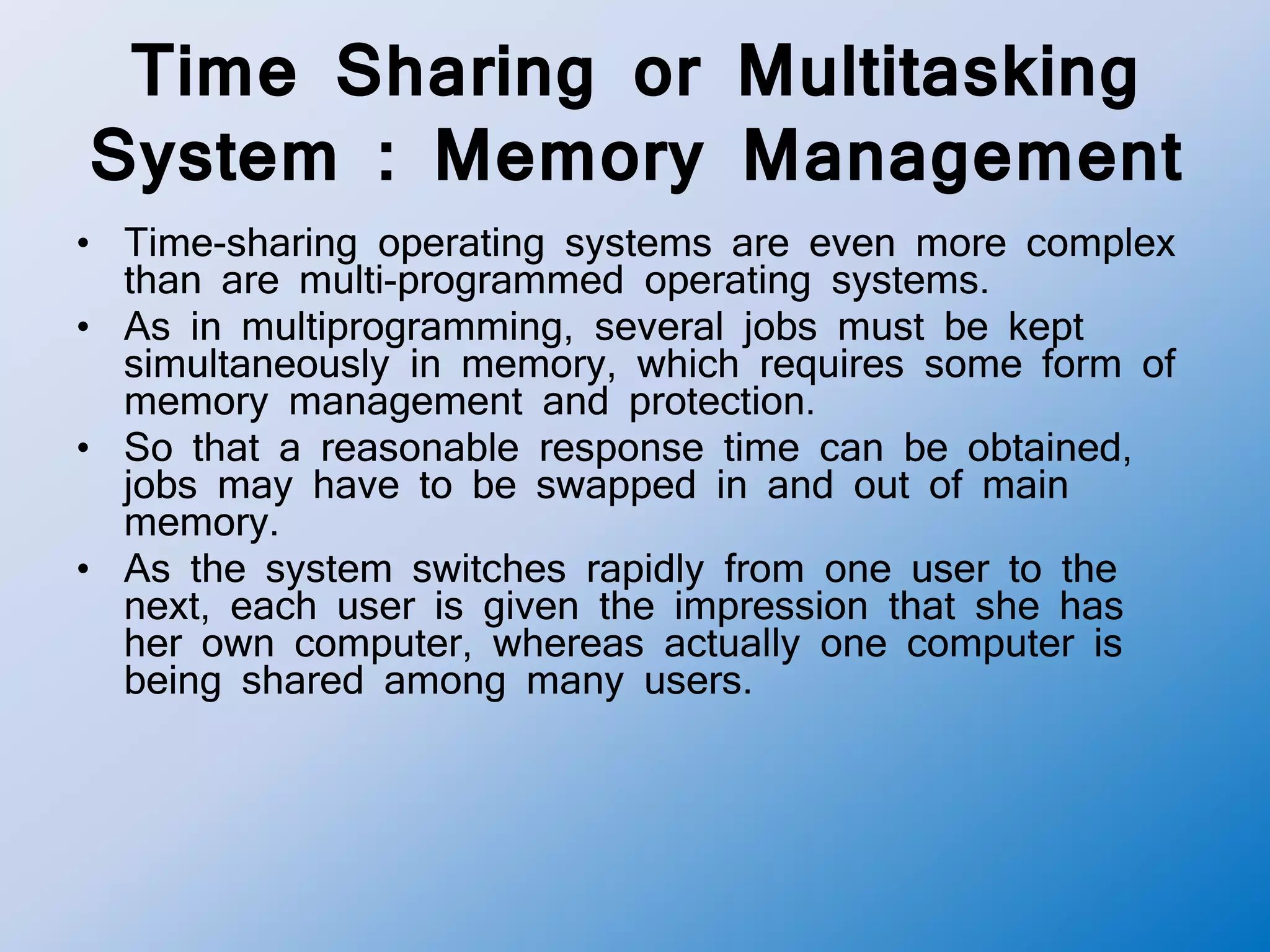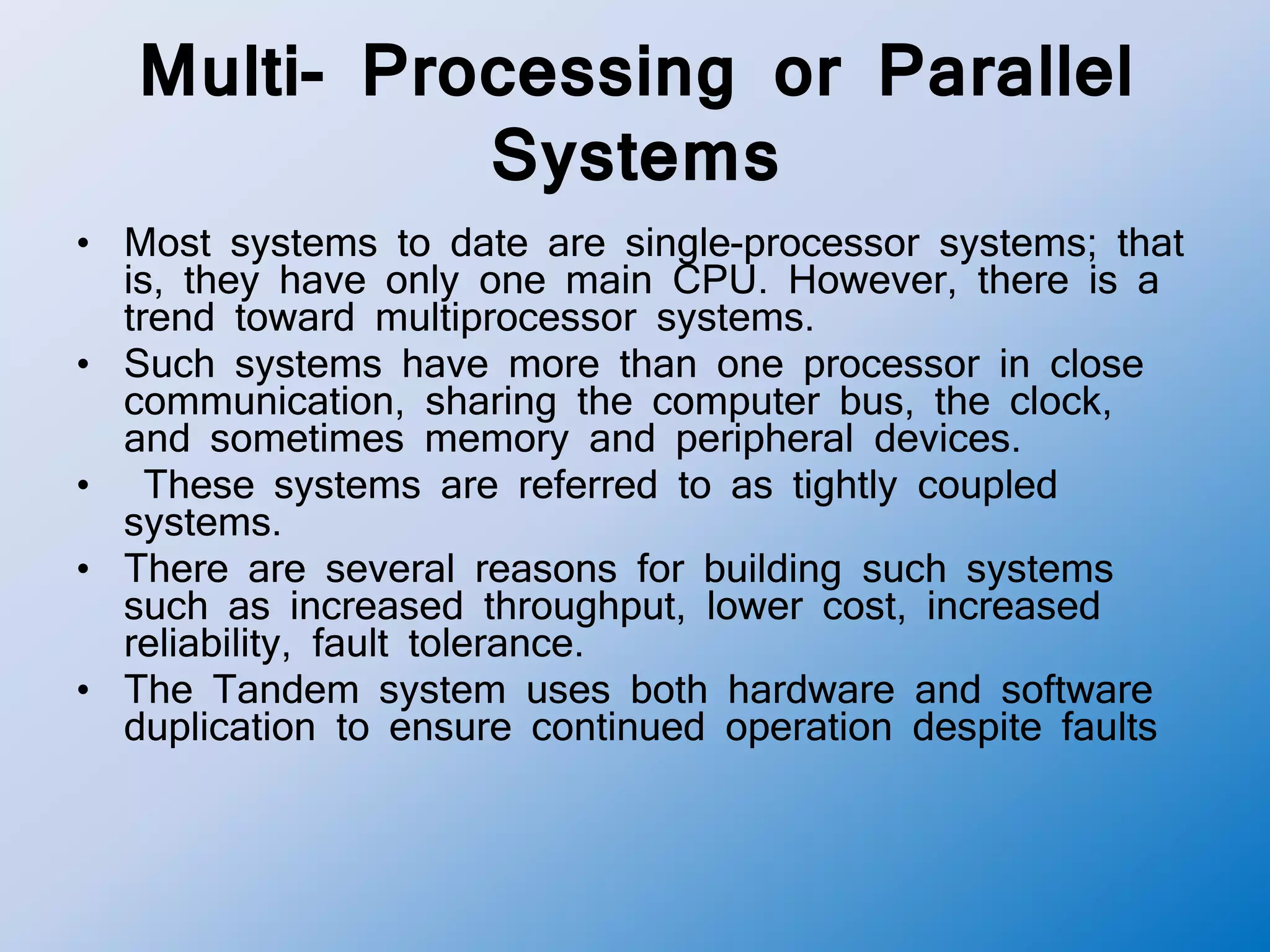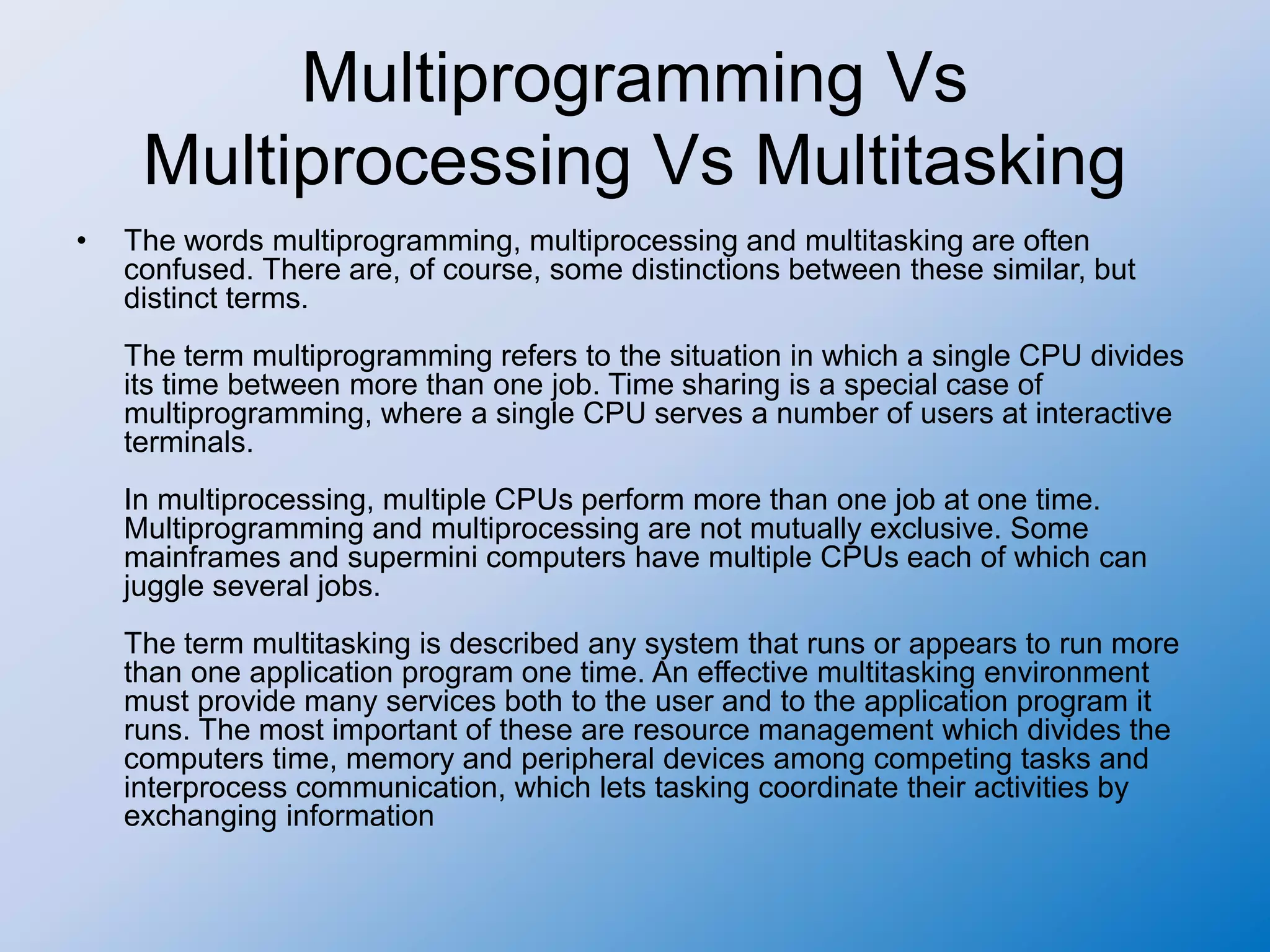The document discusses operating systems, focusing on multiprogramming, time-sharing, and multitasking systems. Multiprogramming aims to increase CPU utilization by handling multiple jobs simultaneously, while time-sharing allows user interaction with programs through quick task switching. Additionally, it contrasts multiprogramming with multiprocessing and multitasking, explaining their roles in managing resources and processes.

